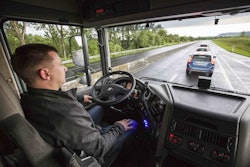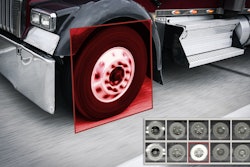

The new unit, whose founding will be effective June 1, will be tasked with comprising overall strategy and implementation of the automated driving roadmap, including research and development as well as setting up the required operations infrastructure and network as the truck maker inches toward series production of highly automated (SAE Level 4) trucks.
“We are the pioneer for automated trucks. With the formation of our global Autonomous Technology Group, we are taking the next step, underscoring the importance of highly automated driving for Daimler Trucks, the industry and society as well,” says Martin Daum, Member of the Board of Management of Daimler AG responsible for Trucks and Buses.
Daum says the new unit will also maximize the effectiveness of the company’s automated driving efforts and the impact of the investments in this strategic technology.
“We will therefore be in the perfect position to put highly automated driving onto the roads, making transportation safer, saving lives and helping trucking companies boost their productivity,” he says.
Peter Vaughan Schmidt, currently head of strategy for Daimler Trucks, will lead this new unit. Schmidt has 15 years of experience in the industry and in his previous position he has been responsible for the development of Daimler Trucks’ strategy on automated vehicles.
Early on, Schmidt says the group will focus on use cases of highly automated driving in defined areas and between defined hubs in the U.S., and will work closely with customers whose businesses match this automated driving application.
“We will not only develop the respective technology but also set up the required operations infrastructure and network,” he says.
Software development for highly automated driving will be one of the key activities of the Autonomous Technology Group. Another will be the so-called vehicle project.
The vehicle project will be responsible for the redundancy in the chassis, enabling the vehicle’s systems to take over roles of a professional driver while on the road. It will also take care of the automated driving sensor kit integration (camera, lidar, radar), which – combined with an accurate map – are responsible for ensuring that the highly automated truck finds its own way on the road. The operations infrastructure and network to be set up by the Autonomous Technology Group – another key activity – will consist of one main vehicle control center as well as additional stations at logistics hubs.
In 2015, Freightliner’s Inspiration Truck was the first commercial vehicle to obtain a road license for a partially automated driving. Earlier this year, the company debuted the 2020 Cascadia, which features a Detroit Connect-powered technology suite that enables Level 2 automated driving.
The Autonomous Technology Group has a global reach with experts working in various locations throughout the company’s worldwide development network, i.e. in Portland, Ore. and Blacksburg, Va., and Stuttgart, Germany. More locations will follow as the test fleet is built up and deployed. Blacksburg-based Torc Robotics will be part of the newly established Autonomous Technology Group, pending the authorities’ approval of the acquisition recently announced by Daimler Trucks.
Daimler Trucks says it will continue to work closely on automated vehicle technology across the company, including joint activities with passenger cars, for leveraging synergies. At the same time, truck specifications require own development activities due to the entirely different nature of the system (one-box vs. articulated) and focus on highway goods transportation vs. inner-city passenger transportation.









